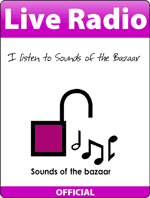Alpha Beta Camp and internal dissemination for Learning Layers
In my previous posts I have reported on the Year 2 review of the Learning Layers (LL) project and on the Critical Path Analysis (CPA) that the project has carried out as a follow-up. This has been an internal exercise to set priorities and to concentrate on key activities. However, this (and the work with related project proposals) has tied us to backstage work. Now we are hoping to take further steps in our fieldwork and in stakeholder engagement. For the moment I can at best pass some short messages on current events.
1. The Alpha Beta Camp in Aachen (9.2. – 11.2.2015)
One of the aims of the project (and also a special recommendation of the reviewers) has been to overcome patchwork-like development of separate tools and apps for different users. Now, after some minor integrative efforts, the LL project is organising an Alpha Beta Camp (ABC) in RWTH Aachen. The time has become ripe for the designers and developers working in different teams to come together to a joint sprint session. For us who have been working with the construction sector – and in particular with the Learning Toolbox (LTB) this is an important milestone. As I see it, the colleagues who are working together in Aachen are trying to geththe LL tools (prototypes) and infrastructures work together at a new level. And as I see it, both pilot sectors – construction and health care – are represented by competent messengers of users. So, we can expect something to build upon in our forthcoming field activities.
2. Internal dissemination for the LL project in ITB
Last week I had a pleasant experience when visiting a meeting of one of the thematic research groups (Forschungsgruppe “Lernen in Arbeit” – FoG LiA). These thematic groups have been launched for sharing knowledge and insights across the departments of our institute. Whilst it is easy to agree that such work is useful, it is often hard to find time for such meetings in the middle of busy times in project work. Now I felt happy to present the Learning Layers to some of my colleagues with whom I had rarely had a chance to have in-depth discussions.
The FoG had developed a set of questions concerning the context of work and research approach of projects to be presented. Instead of responding to these with one ppt-presentation I arranged a guided tour across several earlier presentations:
- We looked at the construction sector presentation for Year 2 review to get an overview on the project (and on the work in the construction sector pilot).
- We looked our presentation for the ECER’14 on accompanying research (Begleitforschung) in this pilot to get a picture of our multiple roles and on the evolution of the participative design process.
- We looked at our presentations on “Work process knowledge” and “Workplace learning” for the Theory Camp session in Aachen (March 2014) to get an impression how we have brought ITB ideas on vocational education and training (VET) and on social shaping (Gestaltung) into European discussion.
- Finally, we looked at Werner Müller’s ppt presentation on the Learning Toolbox (for craft trade company and for intermediate training centre) to get an idea, how the LL tools are supposed to support vocational and workplace-based learning.
After this guided tour and with the help of several smart questions, the colleagues wrote ‘answer cards’ responding to ‘question cards’ and assembled on overview on the LL project on pin-board.
To me, it was interesting to notice, how quickly the colleagues got an impression of a complex project, of our ( = the German partners’ roles), on the key ideas we have put forward and on the developmental steps we are taking. For me this was a clear evidence that there is a lot of shared understanding and intellectual commonality in ITB.
So, these were my interim messages. I am looking forward to the reports from Aachen and to next steps.
More blogs to come …
